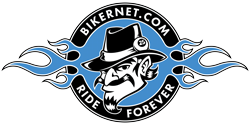Ride Review: Harley-Davidson Touring ST Models for 2022
by Dustin Wheelen from https://www.rideapart.com/ Balancing the raceway and the roadway. Automotive and motorcycle dealers popularized the term “Win on Sunday, Sell on Monday” in the 1960s. While both motorsport and vehicle sales tactics have evolved over the decades, most manufacturers still leverage on-track supremacy for showroom success—including Harley-Davidson. From the hillclimb to the drag […]
Ride Review: Harley-Davidson Touring ST Models for 2022 Read More »
